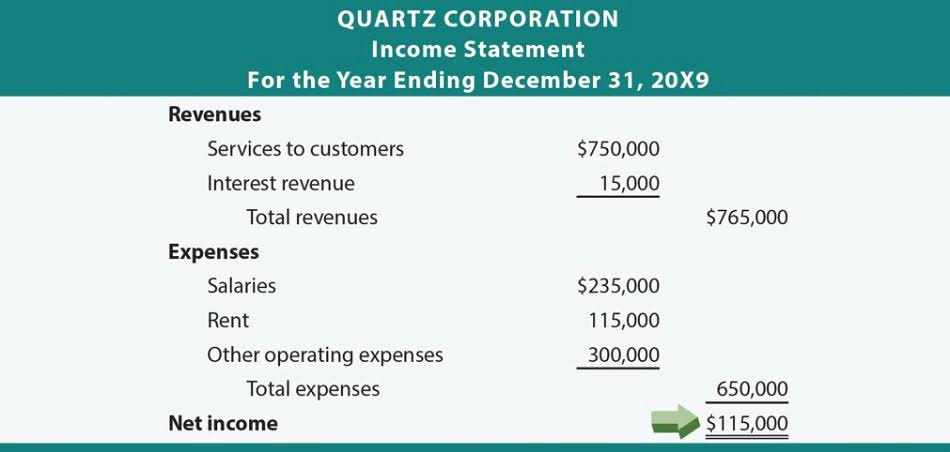Deborah Gemborowski, CPA, P C. New Rochelle Certified Public Accountant
You will check bank deposits for fraud, fix balance sheet errors, and maintain accurate payroll records. Financial institutions, investors, and the government need accurate bookkeeping https://virginiadigest.com/navigating-financial-growth-leveraging-bookkeeping-and-accounting-services-for-startups/ accounting to make better lending and investing decisions. Bookkeeping accuracy and reliability are essential for businesses to succeed for staff, executives, customers, and partners.
Accounting and Tax Services
- Think of bookkeeping as an accountability buddy — it tracks your daily income and expenses and holds you accountable at managing your money.
- But better yet, there are online platforms available such as Taxumo, which can quickly generate the entries that need to be in your various books of accounts in the correct format.
- Bookkeeping is important for filing your personal tax return too.
- Let us dive right in and find out what bookkeeping is and how it can help your business.
- For example, you may have estimated certain invoices that are later solidified with an actual number.
Once you’ve got a handle on how to begin bookkeeping for your small business, it’s time to set yourself up for success with an ongoing bookkeeping system. You have just learned the basics of bookkeeping in your business or bookkeeping 101 as we like to call it. As a business owner, you are faced with business decisions day in and day out. And in any decision you make, there are considerations, mostly related to finances.
Earn bookkeeping certifications.
Efficient bookkeeping involves foresight, meaning that a business should always plan for upcoming financial events, including tax time. Good preparation and documentation are critical for paying taxes (including payroll taxes) on time. This is particularly true once the business accounts for its operational costs and recurring expenses. When hiring external team members, keep in mind that some of the responsibility still falls to you as the proprietor.
Double entry bookkeeping
For both sales and purchases, it’s vital to have detailed, complete records of all transactions. You’ll need to note the amount, the date, and any other important details to ensure you can accurately summarize your finances when it comes time for tax season. Purchase receipts should always be kept as proof that the purchases took place. It might feel daunting at first, but the sooner you get a handle on this important step, the sooner you’ll feel secure in your business’s finances.
Bookkeeping Tools and Software
Especially if your accountant ends up telling you you’ve been using them incorrectly for the past year. Most accounting software today is based on double-entry accounting, and if you ever hire a bookkeeper or accountant to help you with your books, double-entry is what they’ll use. As a business owner, bookkeeping might not rank high on your list of priorities. However, maintaining accurate financial records is key to your business’s success. Financial transactions are business activities that involve money, such as sales, expenses, and payments. Recording and organizing these transactions in a timely manner is essential for effective bookkeeping.
Bookkeeping 101: What is it? Is it Important? How to Get Started
Remember that the basic goals of bookkeeping are to track your expenses and profits, and to ensure you collect all necessary information for tax filing. This makes tracking income and expenses easier by eliminating the manual aspect of recording transactions. Now, if you’re like most business owners, you might find it tedious to keep up with every little receipt so having your monthly https://thecaliforniadigest.com/navigating-financial-growth-leveraging-bookkeeping-and-accounting-services-for-startups/ bank statements would be a great alternative. When you’re properly tracking your business income and expenses, it makes it easier to manage your financial resources. Any monies you owe to suppliers or other agencies for goods or services provided are placed under Accounts Payable. Accounts Payable is an expense account that lets you know how much money you owe to your creditors.
Bookkeeping Basics for Small Business Owners: Everything You Need to Start Doing Your Own Bookkeeping
For full-time bookkeepers, the average annual salary sits around $77,000, according to Glassdoor. If you’re paying your taxes in instalments, quarterly and even monthly financial reports can really come in handy. A clear picture of your income within a specific quarter makes it easy to figure out how much tax to pay for that three-month period. As you balance Accounts Receivable against Accounts Payable, the result is your net income. Divide this amount by net sales amount to obtain your profit margin.
Perhaps you’re just starting out and are investing a lot into advertising. As transactions are coming in, they’ll need to be placed in the appropriate category. If you’re a sole proprietor, you’re not Navigating Financial Growth: Leveraging Bookkeeping and Accounting Services for Startups legally required to do this step. This part can be tricky and is usually where the expertise of an accountant or CPA is needed. Bookkeeping can dramatically improve the bottom line of a company.
It helps you catch errors quickly
It can be produced for one period to gain insight into the month’s profitability, or produced for the year to period. And sometimes it can be produced to include comparisons against the prior year’s same period or the prior year’s year-to-period data. Professional bookkeepers and accounting professionals are available to manage, track, and report on financial activities. Business accounting software and modern technology make it easier than ever to balance the books. A platform like FreshBooks, specifically designed for small business owners, can be transformational. Despite the importance of accurate bookkeeping practices, most people don’t feel entirely confident with maintaining detailed business finances.
- Any monies you owe to suppliers or other agencies for goods or services provided are placed under Accounts Payable.
- The accounting process uses the books kept by the bookkeeper to prepare the end of the year accounting statements and accounts.
- Depending on the type of accounting system used by the business, each financial transaction is recorded based on supporting documentation.
- If the firm has taken on other investors, that is reflected here.
- Jesus Morales is an Enrolled Agent and has 7 years of bookkeeping and tax experience.
At its core, bookkeeping is about recording financial data, while accounting is about interpreting financial data. There are countless options out there for bookkeeping software that blends a good price with solid features and functionality. The specific amount of an emergency fund may depend on the size, scope, and operational costs of a given business. Regardless, work with your bookkeeper and accountant to ensure the amount of cash left in the bank is sufficient for unexpected costs.
It helps you estimate whether a given project or investment would result in more money coming in, or if you’d lose money on the venture. Understanding how to calculate Net Present Value is beneficial for your long-term financial planning. To understand the difference between these two methods, take this example. You ordered the parts in January, and the manufacturer sent you an invoice that same month.
But better yet, there are online platforms available such as Taxumo, which can quickly generate the entries that need to be in your various books of accounts in the correct format. It is a systematic recording and organization of financial transactions for your business. Under double-entry bookkeeping, all transactions are entered into a journal, and then each item is entered into the general ledger twice, as both a debit and a credit.

